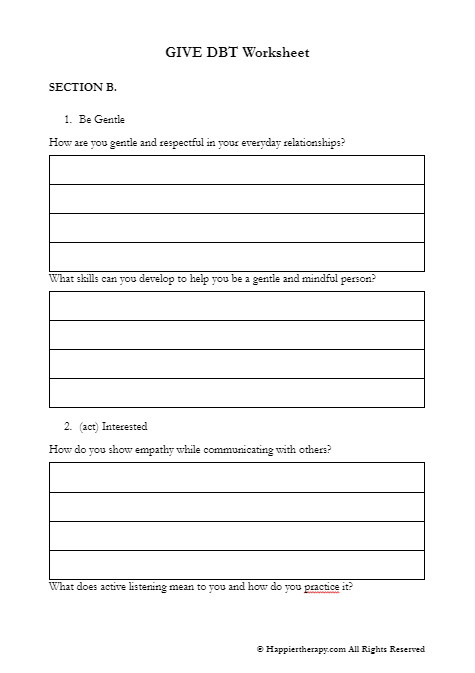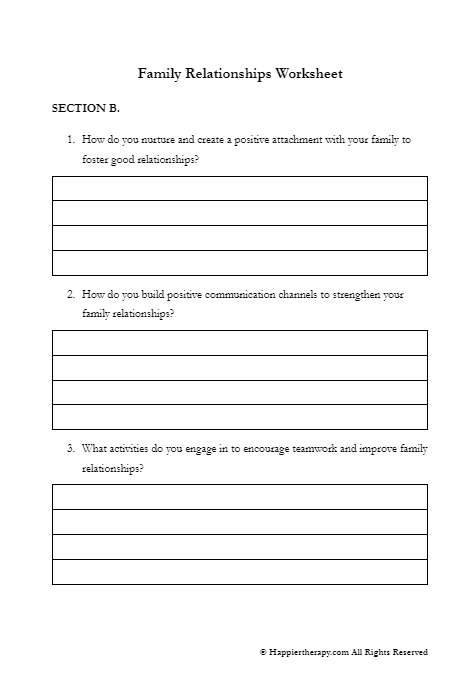Reflective listening worksheet
Download Worksheet
What is the theory behind this Reflective listening worksheet?
The theory behind a Reflective listening worksheet is rooted in the idea that effective communication is essential for building trust and understanding in relationships. Reflective listening is a technique used to show the speaker that their message has been heard and understood by paraphrasing and summarizing what has been said. Reflective listening can help to create a deeper understanding of the speaker’s thoughts, feelings, and experiences.
One of the key theories behind Reflective listening is Carl Rogers’ person-centered therapy. This approach emphasizes the importance of the listener creating a non-judgmental, empathic and accepting environment for the speaker. By reflecting the speaker’s words and feelings back to them, the listener helps the speaker to feel heard and understood, which can lead to greater insight and self-awareness.
Another theory that relates to Reflective listening is Emotion-focused therapy. This approach believes that emotions are a valuable source of information and that by working with emotions, clients can gain insight into their experiences and develop more effective coping strategies. Reflective listening can help to validate the speaker’s feelings and to understand the underlying emotions and needs.
How will the worksheet help?
The Reflective listening worksheet can help individuals in several ways:
- Improving listening skills: The worksheet may provide prompts or exercises that help individuals to reflect on their listening skills and identify areas for improvement.
- Understanding the speaker’s perspective: By reflecting on what has been said, individuals may gain insight into the speaker’s thoughts, feelings, and experiences, and understand their perspective better.
- Validate the speaker’s feelings: Reflective listening can help to validate the speaker’s feelings and to understand the underlying emotions and needs.
- Building trust and understanding: Effective reflective listening can help to build trust and understanding in relationships.
- Reflecting on progress: The worksheet may also be used to reflect on the individual’s progress over time, which can help them to stay on track and continue to work towards their goals.
- Aids in therapy sessions: The worksheet can also be used as an aid during therapy sessions, helping the therapist understand the client’s listening skills and provide more targeted support.
- Practice: Reflective listening requires practice, a worksheet can be a useful tool for individuals to practice and get feedback on their listening skills.
In summary, the Reflective listening worksheet can help individuals to improve their listening skills, understand the speaker’s perspective, validate the speaker’s feelings, build trust and understanding in relationships, reflect on their progress, aid in therapy sessions, and practice reflective listening.
How to use the worksheet?
In this worksheet, the client will be asked to answer a few questions that reflect reflective listening. This worksheet is simple to use and asks a few questions.
Was this helpful?
References
1.-
Reflective listening. (2019, July 9). Staff Gateway for Teaching | UNSW Teaching Staff Gateway. https://www.teaching.unsw.edu.au/group-work-reflective-listening
2.-
How to practice reflective listening (With tips and examples). (n.d.). Indeed Career Guide. https://www.indeed.com/career-advice/career-development/reflective-listening

 By
By


